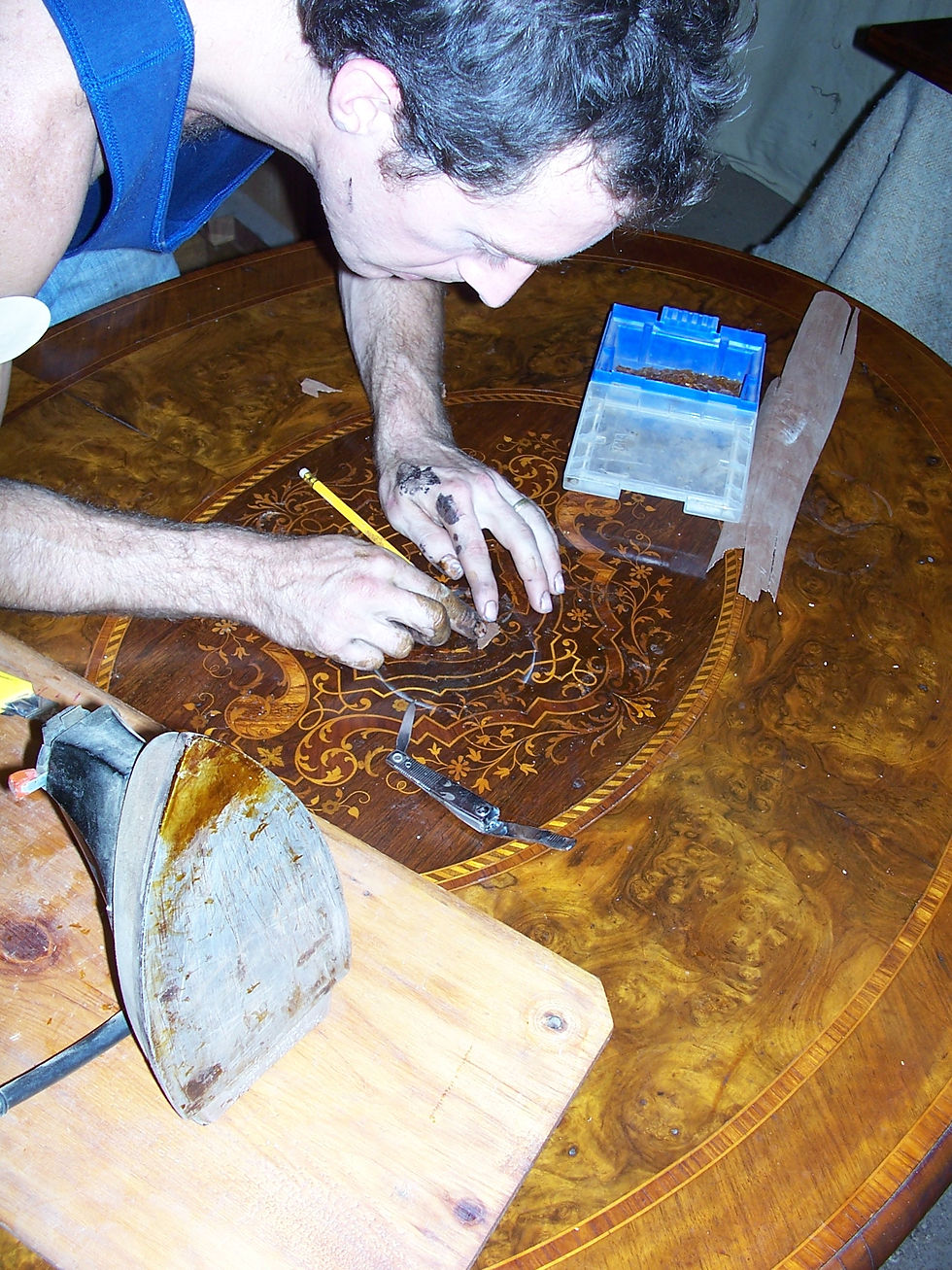Veneer Restoration and Repairs
Brisbane Veneer Restoration and Repair
At KLP Restorations, we specialise in the meticulous restoration of antique veneered and inlaid furniture. Our expertise extends to a wide range of specialty items, ensuring that each piece receives the highest level of care and craftsmanship.
We take pride in reviving the intricate details and timeless beauty of your cherished furniture, using traditional techniques combined with modern technology. Whether it’s repairing damaged veneers, restoring intricate inlays, or breathing new life into beloved antiques, our skilled team is dedicated to preserving the historical and aesthetic value of each piece.


















Understanding Veneer
Veneer refers to thin slices of wood, typically less than 3 mm thick, that are glued onto solid timber, wood panels, or alternative substrates such as particle board. Specialty and exotic timbers are often used to create veneers, adding both beauty and value to furniture and other wooden items.
Given its fine nature, veneer requires careful handling. When stripping old finishes, it's crucial to use methods that avoid damaging the underlying glue, as solvents can dissolve the adhesive and cause the veneer to lift or detach. One of the most challenging tasks we've encountered involved removing a 2-pack finish from a Rolls Royce dashboard, where preserving the veneer while dealing with such a resilient polish tested our skills and expertise.
For a comprehensive overview of veneer, including its types and applications, you might find the following resources helpful:
-
Veneer Cutting Research Document (Note: This resource is licensed under Creative Commons)
For an engaging exploration of the history of veneer, visit:
These resources will deepen your understanding of veneer, from its historical significance to its modern applications.
Rolls Royce
















Non-Caustic Hand Stripping and Re-Polishing of Crazed Finish
When a polished finish becomes 'crazed,' it develops noticeable cracks on the surface. This crazing not only detracts from the appearance but also exposes the timber beneath to potential damage from environmental elements. Consequently, the underlying veneer becomes vulnerable to serious harm.
Addressing crazed finishes requires a non-caustic hand stripping process to carefully remove the damaged polish without affecting the veneer. Once the old finish is removed, we re-polish the piece to restore it to its original condition and ensure long-term protection for the veneer.
Crazing is particularly prevalent with modern, fast-drying finishes such as polyurethane, 2-Pack, and lacquer. It is often visible on surfaces like dining table tops when light reflects off the cracked finish. For an example of crazing, refer to the image of the dining table top shown below.
By addressing crazing promptly, you can preserve the beauty and integrity of your furniture and maximise its longevity.

A good example of what a crazed / cracked finish may look like on a table top.
KLP Restorations, Brisbane & SE QLD
-
Structural chair and table re-glue
-
Non-caustic polish and paint removal
-
traditional and modern polishing methods
-
specialty polish finishes
-
Wood carving and wood turning
-
veneer and inlay repairs
-
traditional and modern cabinetry methods
-
water, mould and fire damage repairs
-
antique furniture restoration
-
Furniture repairs Brisbane
-
antiques
-
furniture repairs